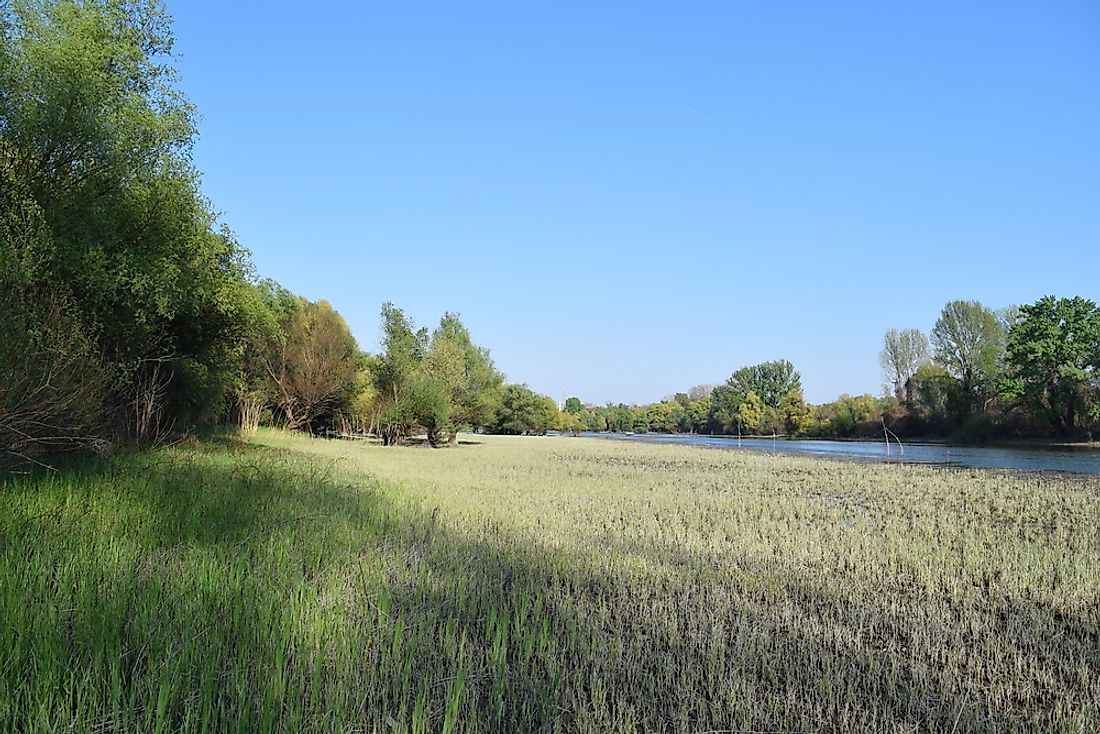What Is Muskeg?

Muskeg is a term used to describe a specific type of soil found in peatland and bog landscapes. It has high acidity and poor nutrient levels. The landscape surrounding muskeg soil is often characterized by wetlands, peat, sphagnum moss, and stunted conifer trees. Muskeg is created in areas where water is unable to drain off due to a layer of clay, permafrost, or bedrock in the soil. This article takes a closer look at how muskeg is formed and where it can be found.
How Does Muskeg Form?
Muskeg is composed of decomposing vegetation like sedge peat, sphagnum moss, and humus (which is more completely decomposed). Muskeg requires sufficient water and cool temperatures to form. As water collects in these areas, it is unable to drain and becomes stagnant. Lacking oxygen, the acidity level of the stagnant water rises. This lack of oxygen and the surrounding cool temperatures create an unattractive environment for aerobic fungi and bacteria, that in normal conditions would work to quickly decompose plant matter. Instead, decomposition occurs at a slower than average rate and as more plant matter is added to the mix, various levels of decomposition take place. This environment prevents large plants, like full-size trees, from growing.
Muskeg soil occurs in depths that range from 3 to 26 feet, although 3 to 9 feet is most common. The older the muskeg, the deeper its soil measurements.
Where Is Muskeg Found?
Muskeg can primarily be found in large, flat, and depressed areas that have been created by glacial outwash and lake plains. It is most common in Arctic and boreal regions, although muskeg can be found as far south as the Hudson Bay Lowland in the US state of New York. In North America, a large area of muskeg can be found in Canada, covering approximately 500,0000 square miles. Geologists believe it was first formed during the last period of glaciation around 10,000 years ago.
Wildlife Living In Muskeg Habitat
Muskeg provides a unique environmental habitat for a number of plant and animal species. As previously mentioned, sphagnum moss is one of the most common plants found here. Other flora that can survive in muskeg include the tamarack, black spruce, cottonwood, willow, and shore pine. These trees, however, are not able to grow to full size in most cases given the lack of nutrients available in the soil. Low, ericaceous shrubs are also common throughout muskeg-rich lands, including bog rosemary, creeping snowberry, leatherleaf, bog laurel, and Labrador tea. In order to survive here, plants must have relatively shallow root systems as only the first 6 inches of muskeg soil allows for the necessary oxygen levels.
Several animal species can also be found living in areas of muskeg, although, their population size is generally small. These species include beaver, mink, short-tailed shrew, muskrat, meadow vole, and masked shrew. Of these animals, beaver and muskrats have the greatest impact on the habitat. Beaver dams can cause significant flooding, while muskrats dig water tunnels through the muskeg. Larger animals that can be found in muskeg areas include moose, gray wolf, bald eagle, osprey, and great blue heron.











